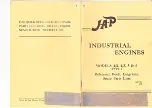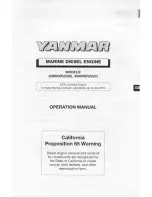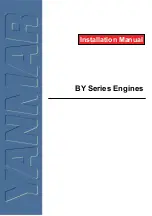
3
• Never return unused fuel from the fuel tank back into
the fuel container.
• Never attempt to repair or modify a propeller beyond
its intended use.
• Never handle model engines, mufflers and/or tuned
pipes until they have had time to cool. They become
extremely hot when in use.
• Never use hands, fingers, or any other body part to
stop the propeller.
• Never throw any object into a propeller to stop it.
• Never run the engine in the vicinity of loose small
objects, such as gravel or sand, to avoid the propeller
uncontrollably throwing such materials.
• Never wear loose clothing or a loose neckstrap when
operating your model engine as these items could
become entangled in the propeller.
• Never have loose objects such as screwdrivers,
pencils etc. in your pockets when operating your
model engine. These could fall into the propeller.
• Never allow fuel to come into contact with eyes
or mouth. Gasoline and other fuels used in model
engines are poisonous.
• Always ensure spectators, especially children, are at
least 30 feet away when running the engine.
• Always ensure that the propeller is securely attached
to the engine shaft and all retaining fasteners are
tightened properly before EACH flight. Use of blue
threadlock to tighten nuts is advisable.
• Always keep small parts out of the reach of children
as they can be choking hazards.
• Always secure the airplane before powering the
engine.
• Always keep your face and body away from the path
of the propeller blades when starting or running your
engine.
• Always stand behind the propeller when making
carburetor adjustments.
• Always wear safety glasses or goggles when starting
and running your engine.
• Always keep your fuel in a safe place well away from
sparks, heat or anything that can ignite.
• Always ensure the aircraft is secure and will not
move once the engine is started.
• Always rebind your transmitter to your receiver(s)
after setup and before first flight.
• Always ensure the throttle failsafe is set to low
throttle in your transmitter.
• Always perform a range check prior to flight.
• Always cut off the fuel supply (pinch or disconnect
the fuel line to the carburetor) or use the throttle
linkage to shut off the air in order to stop the engine.
• Always ensure gasoline and fuel is stored in a
clearly marked container well away from the reach
of children.
• Always mount the engine securely on a bench mount
or high-quality engine mount.
• Always use the correct size and pitch of propeller for
your engine. Refer to Propeller Chart in this manual.
• Always confirm proper balance of your propeller prior
to installation of the engine. Failure to do so could
cause damage to the engine and/or the airframe.
• Always utilize an electric starter to start your engine.
• Always discard any propeller that is nicked,
scratched, cracked or damaged in any way.
• Always run your model engine in a well-ventilated
area. Model engines produce possibly harmful
carbon monoxide fumes.
• Always store your fuel safely in a sealed, water-
resistant container.
• Always store fuel in a cool, dry location. Do not
allow fuel containers to come in direct contact with
concrete, as the fuel may absorb moisture.
• Always responsibly discard fuel if there is
condensation and/or water inside the fuel container.
Model engines produce a substantial amount of power and can create unsafe situations if not used correctly.
Always use common sense and observe all safety precautions when operating, handling or performing any
procedure involving your engine. Failure to follow safety precautions could result in serious injury and property
damage.
Содержание FG-14C
Страница 25: ...25 Saito FG 14C FG 17 FG 21 Exploded View...
Страница 30: ...30 Saito FG 30B FG 36B FG 40 Exploded View...




































